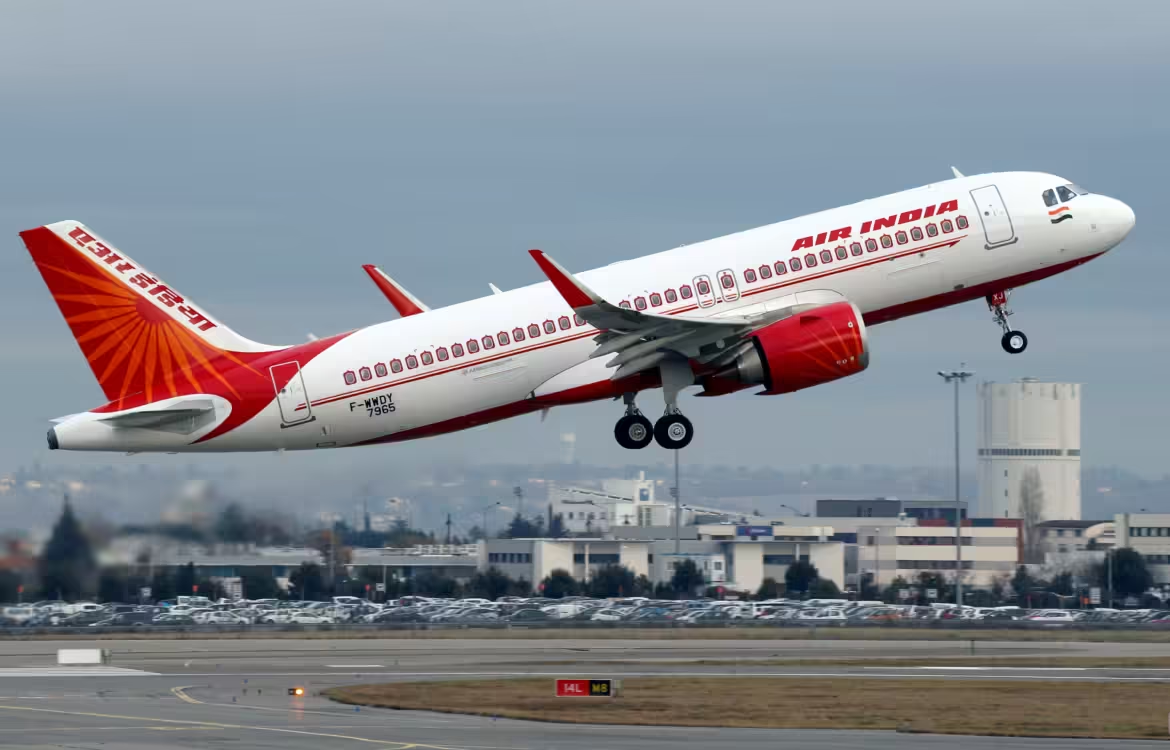A wave of mid-air panic has struck Indian airlines after several bomb threats caused flight diversions and delays across the country and beyond. Since Monday, at least 19 flights operated by various Indian airlines, including Air India, IndiGo, SpiceJet, and Akasa Air, have received bomb threats, sparking heightened security measures and significant disruption. The sudden surge in threats has raised concerns among passengers and aviation authorities alike.
Bomb Threats Force Emergency Landings and Delays
The first sign of mid-air panic in Indian airlines came on Monday when several flights originating from Mumbai were either delayed or diverted following bomb threats. Since then, hoax bomb threats have been issued to multiple flights, leading to emergency landings, rerouted flights, and hours-long delays for passengers. On Tuesday, an Air India Express flight from Madurai to Singapore was escorted by two fighter jets after receiving a bomb threat. The plane eventually landed safely at Singapore’s Changi Airport, where local police and aviation security teams conducted an investigation.
Another bomb threat forced an Air India flight traveling from Delhi to Chicago to make an emergency landing at Iqaluit Airport in Canada. The Royal Canadian Mounted Police (RCMP) have since launched an investigation into the incident, while a Canadian Air Force plane transported the passengers to Chicago. These incidents have created a sense of unease as authorities scramble to ensure the safety of passengers and crew on all affected flights.
Sudden Surge in Bomb Threats Across Indian Airlines
The recent bomb threats have affected multiple airlines, including Akasa Air, which had a flight bound for Bengaluru diverted to New Delhi after receiving a threat on Wednesday. It remains unclear what triggered the sudden increase in threats, but security agencies are on high alert. The Indian civil aviation ministry has confirmed that it is closely monitoring the situation and working to safeguard the country’s airspace.
India’s civil aviation minister, Ram Mohan Naidu Kinjarapu, assured the public that the government is committed to maintaining the highest security standards. In a statement on social media platform X, Kinjarapu said, “We are making every possible effort to ensure passenger safety, and additional security measures are being taken.” However, the authorities have not yet provided an official explanation for the sharp rise in bomb threats.
Heightened Security Measures in Response
The mid-air panic in Indian airlines has prompted the government to deploy additional security officers on sensitive flight routes. Although no official confirmation has been issued, a senior official from the Home Ministry indicated that the security presence would be increased to mitigate any potential threats. India’s Directorate General of Civil Aviation (DGCA) and Bureau of Civil Aviation Security (BCAS) are reportedly working with local and international agencies to handle the ongoing situation.
Indian airports have activated their Bomb Threat Assessment Committees, which are tasked with evaluating each threat’s credibility. In response to bomb threats, all passengers, cabin baggage, and cargo are re-screened, and the aircraft undergoes a thorough search by bomb disposal squads, sniffer dogs, and security personnel before being cleared for takeoff. These rigorous procedures, though necessary for safety, have led to lengthy delays and financial losses for airlines.
International Implications of the Bomb Threats
The mid-air panic caused by these bomb threats has also led to the involvement of international agencies. In the case of the Air India Express flight to Singapore, the Singapore Air Force quickly scrambled two fighter jets to escort the plane away from populated areas until it landed safely. Similarly, the bomb threat to the Air India flight bound for Chicago involved the Canadian authorities, who are continuing their investigation.
The financial and logistical costs of these bomb threats have been immense. Airlines have suffered significant losses due to the delays, rerouted flights, and security protocols that are put in place to ensure passenger safety. Air India has already announced that it is cooperating with law enforcement and will pursue legal action against those responsible for issuing the threats, which have caused damage to the airline’s operations.
Conclusion
The recent surge of bomb threats, leading to mid-air panic in Indian airlines, has raised serious security concerns and disrupted the travel plans of thousands of passengers. While authorities have managed to keep the situation under control, the sudden and widespread nature of these threats has put pressure on India’s aviation industry to tighten security measures and prevent further incidents.
As investigations continue, the Indian government remains focused on ensuring the safety of passengers while working with international partners to resolve the situation. For now, airlines and travelers are adjusting to the heightened security protocols, but the fear and disruption caused by these hoax threats continue to loom large in India’s skies.
Stay connected to know more on arcnews.online for global news like Mid-Air Panic in Indian Airlines After Several Bomb Threats. For videos updates visit our YouTube. Do subscribe to Arcnews to get latest updates directly in your mail box.
Have A Great Day.


